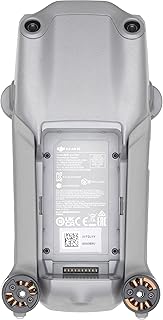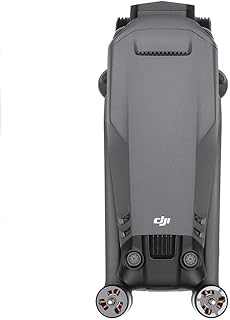RotorLogic Drone: A Detailed Analysis of its Technology
While there's no official "RotorLogic Drone" product, I can provide you with a detailed analysis of drone technology based on common features and industry trends. This will give you a good understanding of what a hypothetical "RotorLogic Drone" might offer.
I. Core Components and Technologies:
1. Airframe:
* Materials: Typically made from lightweight, durable materials like carbon fiber, fiberglass, or aluminum.
* Design: Variable depending on purpose, ranging from compact folding designs to larger multi-rotor configurations.
* Aerodynamics: Tailored to minimize drag and maximize flight efficiency.
2. Propulsion System:
* Motors: Brushless DC motors are standard, offering high efficiency and longevity.
* Propellers: Multi-blade propellers generate thrust and are designed for specific flight characteristics.
* Electronic Speed Controllers (ESCs): Control motor speed and direction based on flight control commands.
3. Flight Control System:
* Hardware: Includes a flight controller, sensors (IMU, barometer, GPS, etc.), and actuators (servos).
* Software: Sophisticated algorithms manage flight stability, navigation, and autonomous functions.
* Communication: Receives commands and transmits data via radio frequency or other wireless protocols.
4. Battery:
* Type: Lithium-ion batteries are prevalent due to their high energy density and low weight.
* Capacity: Determines flight duration and payload capacity.
* Charging System: Utilizes specialized charging ports and circuits for efficient and safe charging.
5. Camera and Imaging:
* Sensors: Includes cameras for visual capture, sensors for thermal imaging, LiDAR for 3D mapping, and other specialized sensors.
* Image Processing: Utilizes algorithms for image stabilization, stitching, and other image processing techniques.
* Data Storage: SD cards or internal storage for recording and storing captured data.
II. Key Features and Functionality:
1. Flight Modes:
* Manual Control: Pilot controls the drone directly using a remote control.
* Autonomous Flight: Drone executes pre-programmed flight paths or follows waypoint navigation.
* Return-to-Home (RTH): Drone automatically returns to its launch point in case of low battery or signal loss.
* Follow Me: Drone automatically follows a designated target, ideal for filming or surveillance.
2. Navigation and Positioning:
* GPS: Provides accurate positioning and navigation data.
* Optical Flow: Estimates drone movement based on visual cues from the camera.
* Ultrasonic Sensors: Measure distance to objects below the drone, aiding in obstacle avoidance.
3. Data Collection and Analysis:
* Aerial Photography & Videography: Capture high-resolution images and videos from the air.
* 3D Mapping: Create detailed 3D models of environments using LiDAR or other sensors.
* Thermal Imaging: Identify heat signatures for applications in search and rescue, inspection, or agriculture.
III. Potential "RotorLogic" Features:
Hypothetically, a "RotorLogic" drone could focus on advanced aspects of drone technology, such as:
* Advanced Flight Control: Utilize AI and machine learning for smoother, more responsive flight behavior.
* Enhanced Autonomy: Implement complex, adaptive autonomous flight algorithms for increased efficiency and safety.
* Data Analytics: Integrate onboard data processing capabilities for real-time analysis of collected data.
* Modular Design: Offer a flexible, modular platform for customization and integration of diverse payloads.
IV. Conclusion:
By focusing on the core components and technologies of drones, we can create a hypothetical "RotorLogic" drone that offers advanced features and functionalities. The future of drone technology promises even more innovative advancements in areas like AI, connectivity, and safety, further expanding the potential of these versatile machines.


